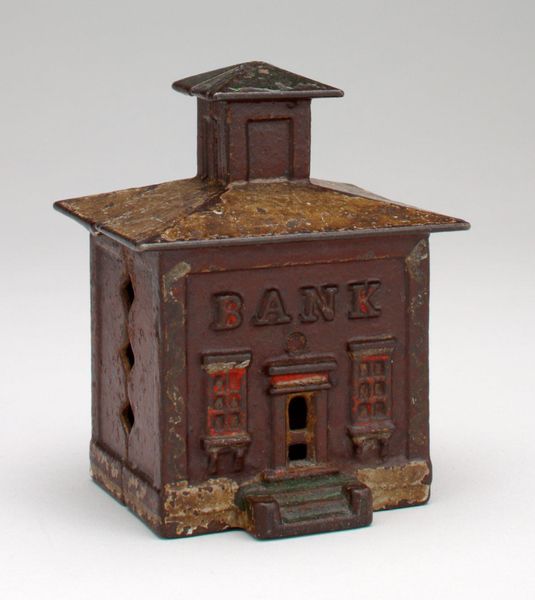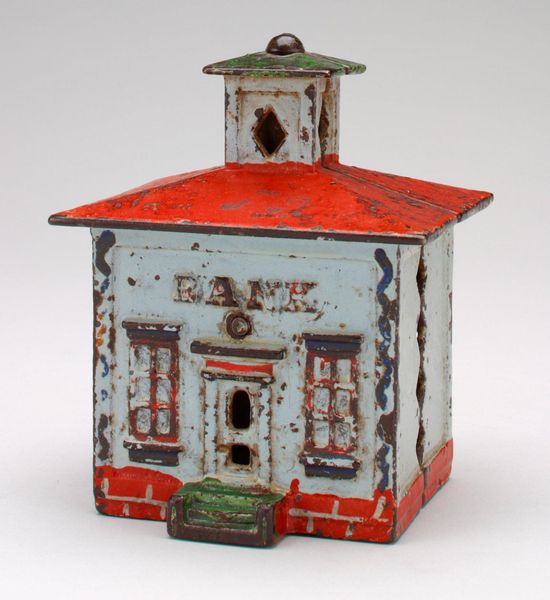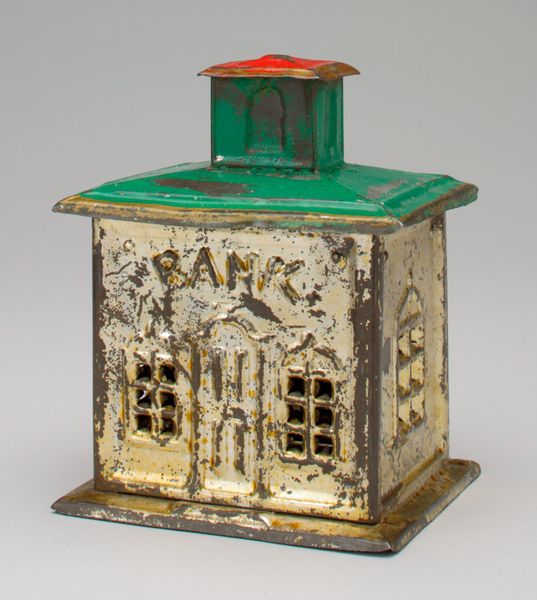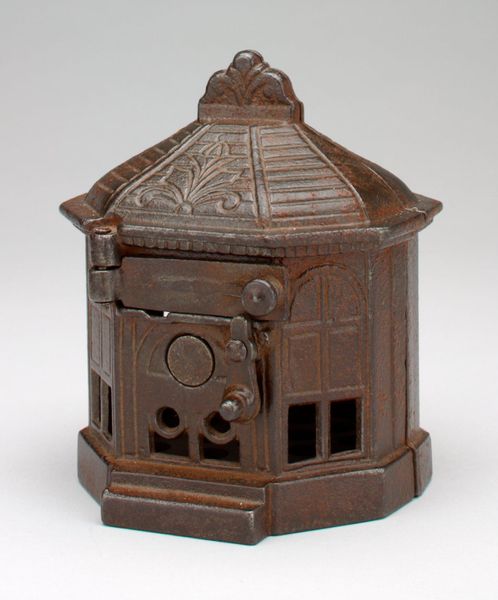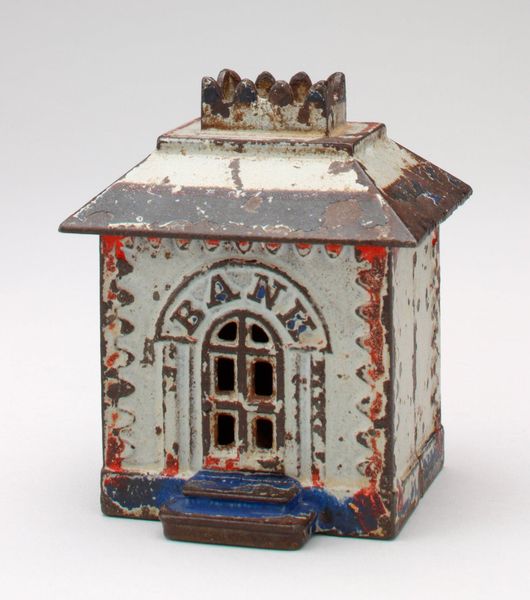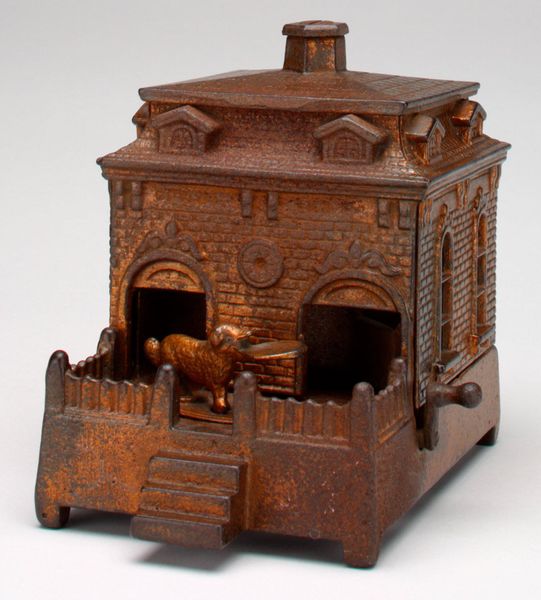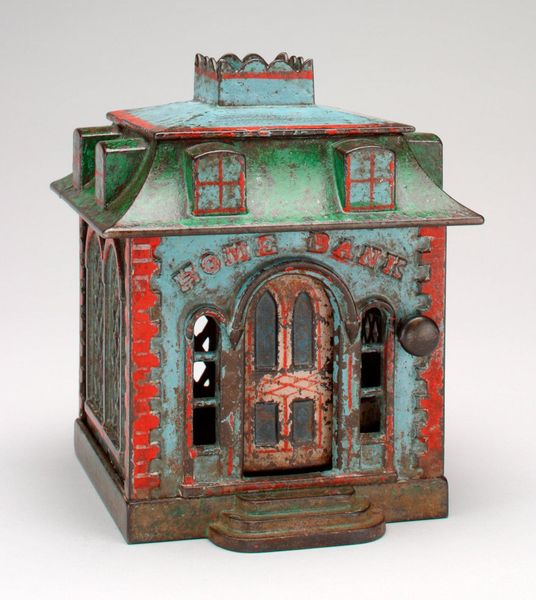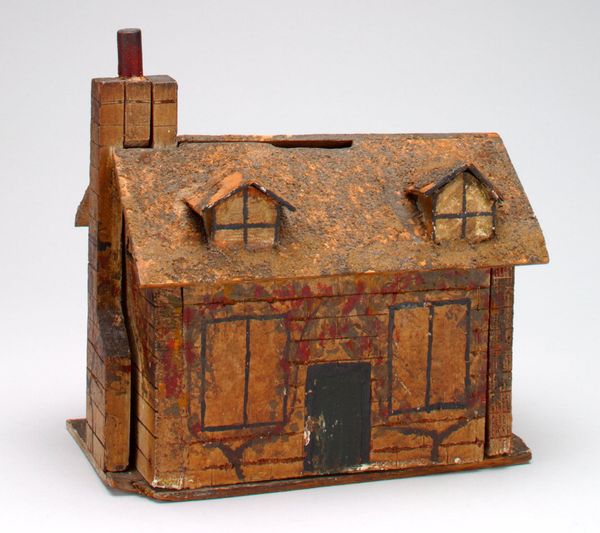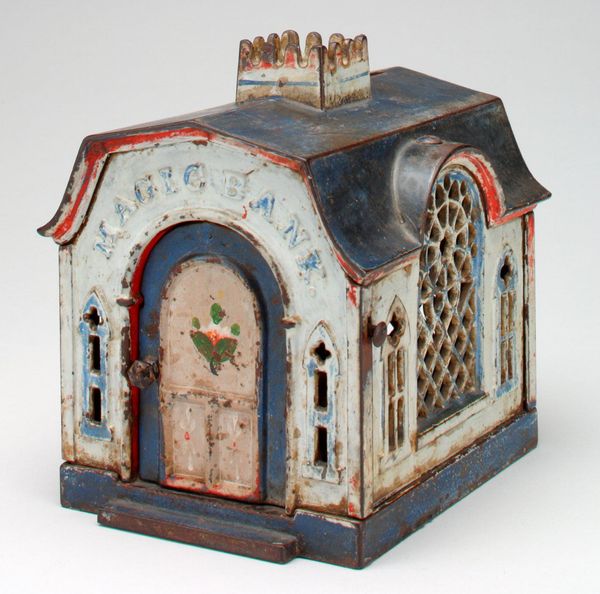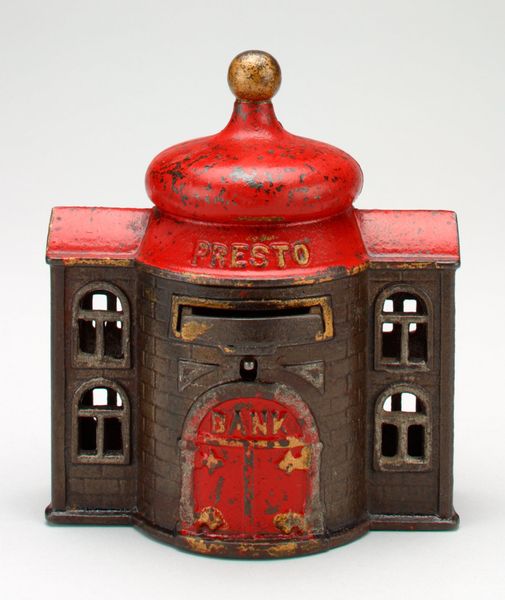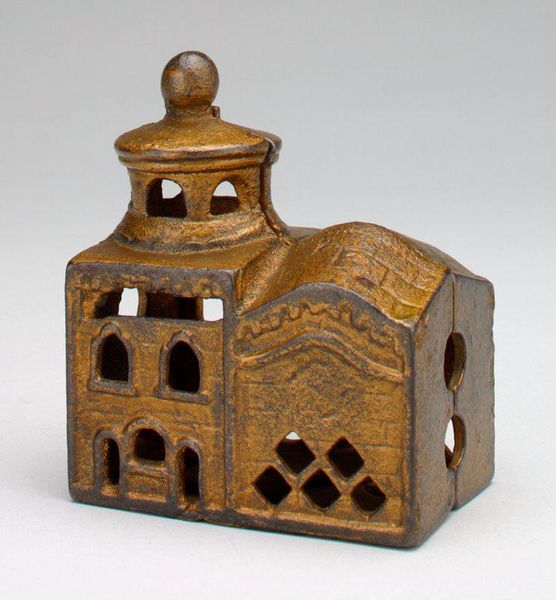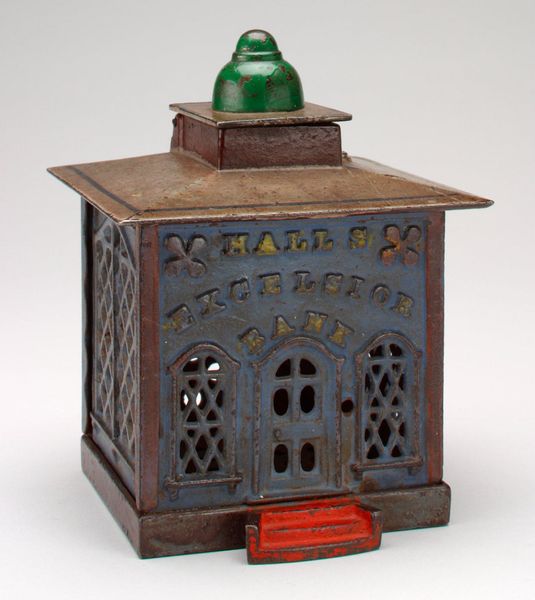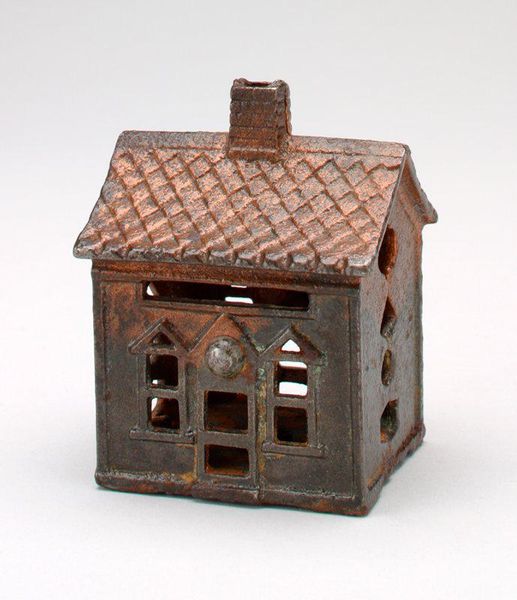
mixed-media, metal, found-object, sculpture
#
mixed-media
#
metal
#
sculpture
#
found-object
#
stoneware
#
geometric
#
sculpture
#
miniature
Dimensions: 3 1/8 x 2 5/8 x 2 3/16 in. (7.94 x 6.67 x 5.56 cm)
Copyright: Public Domain
Curator: E. Stevens created this “-Cupola- still bank” in 1872. It's a charming little sculpture employing metal and found objects, now residing here at the Minneapolis Institute of Art. Editor: The immediate impression is one of nostalgic Americana, with the rusted finish lending an aged quality. The overall boxy structure is surprisingly weighty in its presentation, even on a miniature scale. Curator: Indeed. The rough, textured surfaces and the limited color palette emphasize the geometry. Note how the cube form is then vertically extruded, culminating in a diminutive cupola, mimicking neoclassical architecture of the time. It’s a play on the building’s implied function, a symbolic structure intended to accumulate wealth, reflected in the geometric order. Editor: The small windows and steps, coupled with the building block shape, echo children’s toys. Given its designation as a ‘still bank,’ there’s a merging of capitalist ambition and childhood innocence being presented, the bank transformed into something comforting. Red, here, traditionally signals passion but also hazard; how might that interact with our ideas of economic anxiety during its historical period? Curator: Fascinating, particularly considering the symbolic connotations you draw. Considering Stevens utilized existing forms for construction, these colors would have had an already applied social and semiotic code to build meaning through re-contextualization and modification. Editor: So the artist isn’t purely imposing intent, but actively in conversation with readily-available signifiers. What did “bank” as an icon mean to the contemporary viewers, especially those engaging with capitalism and currency as emergent forms? Curator: That touches on interesting points. This repurposing reflects a nascent industrial society appropriating imagery for moral and economic indoctrination of its young people; the architecture signals stability and trustworthiness, but in a very concentrated, childlike manner. Editor: Precisely! Its art lies, then, not merely in visuality, but this convergence of iconography and context. The material acts almost as a form of cultural storytelling. It’s quite sobering to see how cultural meanings, even in everyday objects, evolve to form such powerful dialogues about aspiration. Curator: Absolutely. Thank you for that deeply insightful cultural exploration, prompting fresh avenues of contemplation on this unassuming sculpture. Editor: And thank you; analyzing structure makes it very easy to miss the complex societal messages.
Comments
No comments
Be the first to comment and join the conversation on the ultimate creative platform.
